Best Pots For Growing Weed
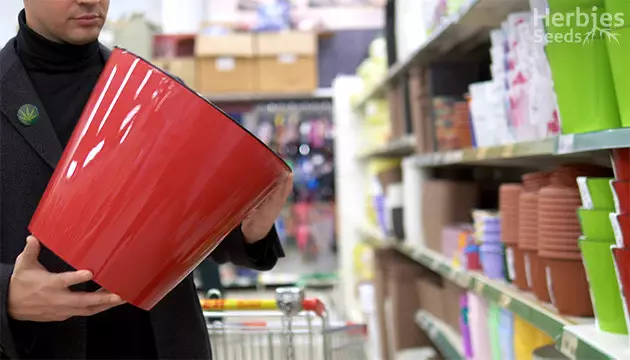
If you know even a little about pots or growing containers, you’ll be well aware that they are not all the same. Each has a particular design that matches the grower’s needs. Similarly, growing pots don’t just differ in terms of size. Different kinds of containers are present in the market, ranging from regular to advanced pots.
What Do Cannabis Roots Want?
As far as pots go, cannabis requires one thing more than any other, and that’s a healthy and safe place to develop its roots. Cannabis fails to thrive optimally if the roots are not healthy, the reason being that the roots take charge of nutrient absorption, water retention, helping with vegetative growth and serving as an anchor for the plant.
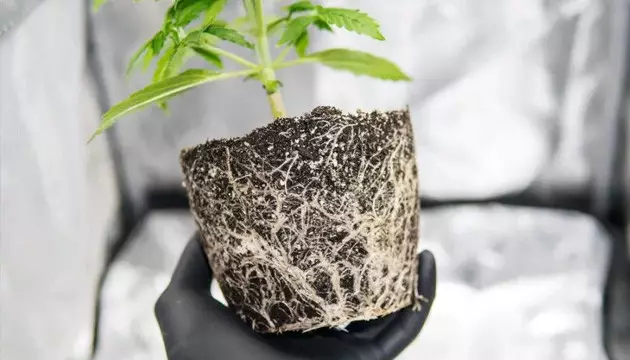
Here are the 3 major elements that all cannabis roots require.
Moisture
As you may know, retaining water is vital to the health of any plant. Without water, cannabis doesn’t thrive and ends up dying after withering for a certain period. Of course, the growing medium is a key part of this process, so choosing the right container to house your plants could do you a world of good. Therefore, make sure to mitigate any damage by providing proper drainage access to your roots. If you want to figure out the quantity of water your plants require, consider factors like plant size, overall plant health, outside temperature and plant growth stage.
Oxygen
Just as moisture is vital for a plant’s health, so is oxygen access just as crucial. Keeping this information in mind, go for containers that offer sufficient oxygen to develop the plant’s roots while ensuring they don’t allow the plant to gain too much exposure to harmful elements. Various container varieties provide the roots with extra oxygen exposure through an assortment of perforation styles.
The plant’s roots use oxygen by absorbing it directly from water or soil that contains dissolved oxygen. The quantity of dissolved oxygen present in water depends on the water’s temperature. Cold water contains a higher quantity of oxygen while warm water has lower amounts.
Nutrients
Roots need optimal conditions to absorb nutrients effectively. Nutrient availability, optimal temperatures and pH balance play a key part in effective nutrient absorption. Just like animals, plants also go through various stages of life. They need different nutrition in all stages to thrive and grow. Of course, using an optimally-sized pot and excellent soil is vital, but nutrition is just as important.
New growers often wonder whether they should take the chemical or organic route for their plant’s nutrition. The reality is that both have their place. Each offers a different option, which means you need to decide which to use according to the particular requirements of your plant.
Types Of Pots
Tons of options are out there when it comes to pots. The place where you’re growing your cannabis, how you plan to grow it and the type of pot you want to utilize are the main determinants. As mentioned earlier, every pot is different. Let’s take a look at the different types of pots that growers prefer.
Standard Plastic Pots
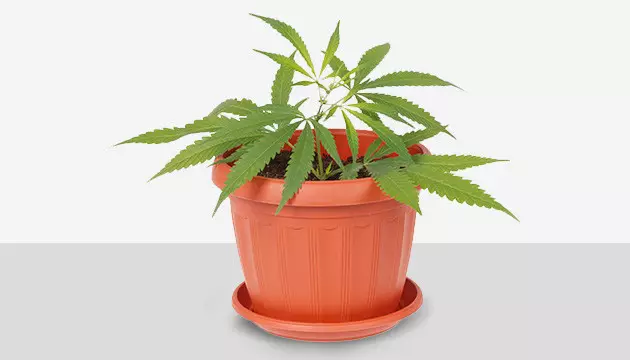
This is one of the most common pot types. You can find them easily almost anywhere and they are also quite cheap. In fact, standard pots are mostly available in plastic form. In case you go for these standard plastic pots, make sure you get a matching saucer to go with them. It will come in handy to catch runoff water present beneath the pot.
A vital thing to keep in mind about standard plastic pots is that they should contain drainage holes to prevent water logging. Drainage holes are present at the pot’s bottom. Not every pot has pre-bored holes, so you may need to create these yourself before beginning to utilize the containers for growing your plants.
Pros
- Transplanting is affordable and simple
- Drainage is quite solid
- Overhead costs are very low
Cons
- Could have airflow issues (depending on growing medium)
- Durability is on the lower side since structural damage and cracks could occur over time
- Standard pots are unable to prevent temperature fluctuations by shielding root systems
Standard Terracotta Pots
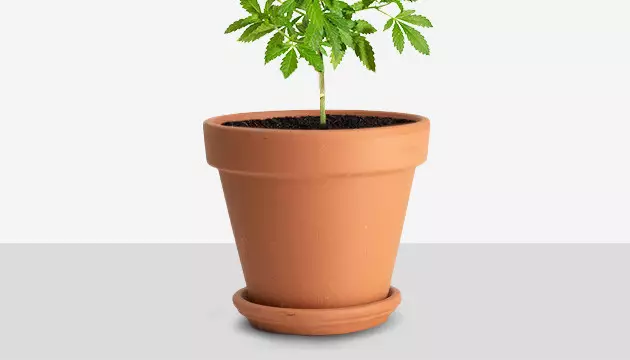
Also referred to as ceramic containers, standard terracotta pots are similar to standard plastic pots. The only difference between the two is the material. However, terracotta pots are highly beneficial for growers who plan to grow weed in warm climates. Terracotta pots are also heavier in comparison to plastic pots. This pot type is naturally able to store and soak up extra moisture, creating a cooling effect. This is the reason why hot climate growers prefer it so much.
Pros
- Pot’s heavy weight comes in handy to anchor bigger plants
- Retains low temperatures and absorbs moisture on hot days
Cons
- Heavy weight of this pot sometimes creates difficulty in transporting plants
- Drainage is not at all optimal, and drilling holes is a labor-intensive task requiring the use of special tools
Fabric (Smart) Pots
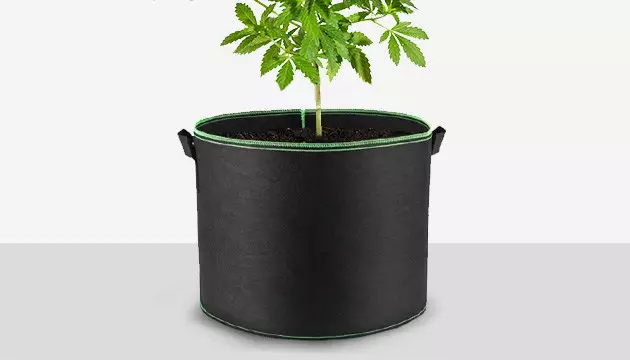
Fabric pots and smart pots are one and the same. Their purpose is to ensure that plants do not become root-bound. Instead of growing in cycles as growers usually do with standard closed pots, fabric pots air prune all the roots once they reach the container’s sides. Because of this, the roots can grow without any hindrance, in turn improving plant growth. Fabric-growing bags or pots also have another advantage – they make sure you do not overwater your cannabis plant by a single drop.
Pros
- Fabric pots have ideal drainage, which is perfect for well-maintained gardens
- Roots receive more airflow in these pots
- Storing fabric pots is very convenient
- Promotes strong roots
Cons
- Plant support can be tough because of the flimsy structure, as these pots tend to dry out fast
- Needs more maintenance and attention
Air Pots

Air pots are quite similar to the smart pots discussed earlier. They are plastic containers that possess side openings which help with automated pruning of your cannabis plant’s roots. However, as with fabric pots, you have to water air pots regularly, as they tend to dry out quickly in comparison to plastic pots. Air pots are quite sturdy, so you don’t need to worry about them tipping over. Because air pots tend to leak water from side openings, make sure to keep them higher than regular size saucers.
Pros
- Perfect airflow and drainage
- Excellent perforation helps to prune and catch roots effectively
Cons
- Air pots are slightly expensive because of their complex design and material
- They need extra care and watering in comparison to regular containers
Hempy Buckets

Hempy buckets are just simple buckets that contain a hole on both sides. These buckets are filled inside with coconut coir soil and perlite. The bucket works as a passive watering setup by retaining a decent amount of water in the section that contains pure perlite. The reason why hempy buckets use perlite is because of their light weight and perfect water drainage abilities. Essentially, it tricks the plant into thinking that it has a natural pocket of water.
Pros
- It would be wise to go for a bucket that is not transparent, as algae tends to grow in transparent buckets due to sunlight exposure
- Hempy buckets do not require frequent watering and attention, so are perfect for growing bigger plants
Cons
- Using hempy buckets could lead to nutrient or root problems once in a while due to the presence of stagnant water at the container’s bottom. The more water there is at the container’s bottom, the more nutrients tend to rinse away.
Maintenance Of The Pot
Although pot maintenance sounds like a daunting task, it really isn’t. In fact, it would be fair to say that this is quite easy. Consider your pot’s material before you begin to maintain it. Make sure it provides adequate drainage so that water can easily pass through. You would also benefit from pairing your containers with trays or saucers. The reason for this is that by design, they catch runoff water as it passes out from the holes. It is vital to collect moisture at the end of every watering session – some growers choose automated or vacuum systems for collecting water.
What Container To Grow Seedlings In

The most important thing to guarantee a healthy grow is to make sure your container provides sufficient drainage to the seedlings. Mostly, seedling pots tend to be quite small and do not hold a large quantity of growing space. Because of this, the soil dries out much faster than you might imagine, which decreases the risk of overwatering. Party cups or solo cups are also quite common among growers, and are excellent options to grow seedlings effectively. Remember to cut a couple of drainage holes below the cup. You may need to transfer the larger grows to a different container later on if and when they become larger.
Which Size To Choose For Indoors/Outdoors
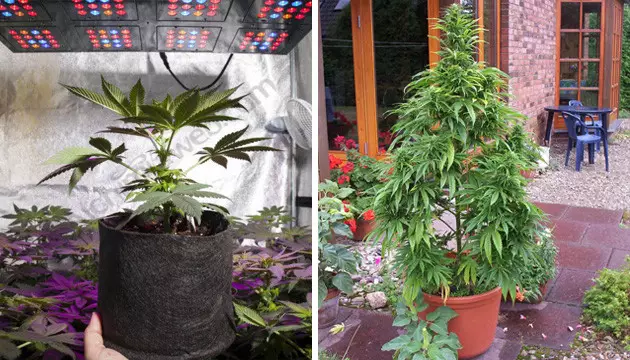
Always using the same type or size of container simply doesn’t do the trick when growing weed. For instance, since autoflowering varieties are not too tall, you can easily store them inside medium or small size containers. When you choose the size of growing pot, think about your cannabis plant’s final size.
A pot size of around 2 gal (7.5 liters) would be an ideal starting point for a plant close to 1ft (30cm) in height. Just keep in mind that every cannabis variety grows differently. While some strains are slender and tall, others can be bushy and wide. It could help you to find the correct size of pot right from the start.
How Does Pot Size Affect Yield?
The size of a pot has a major impact on the yield. A plant’s roots require adequate space in order to properly grow. Without enough space, plants become pot-bound, which deteriorates your yield quality. Keeping a rough estimate of the yield’s final size is a wise choice, as this helps you to choose an adequate pot size that won’t negatively impact your yield.
Final Verdict
Selecting a pot is a decision that most experienced growers base on maintenance. Some containers need less maintenance, as you do not need to water them often. Other containers may require frequent maintenance, and you may need to water or monitor them regularly. It all comes down to how much time you can dedicate to the container on a daily basis.
Finally, it would also be advisable to consider transplanting. You may need to learn this skill, as some yields grow larger and require transplanting to separate containers.
Herbies Head Shop expressly refuses to support the use, production, or supply of illegal substances. For more details read our Legal Disclaimer.

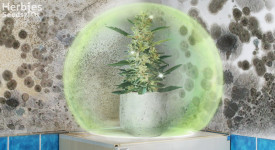


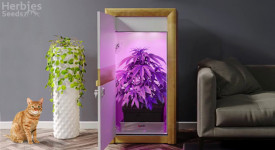
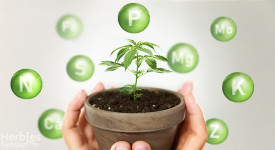

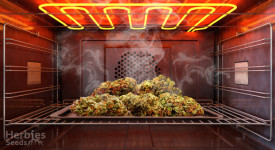


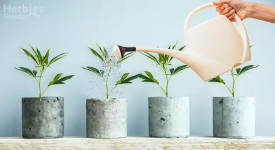



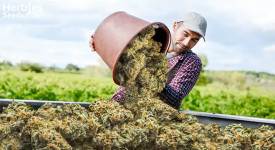




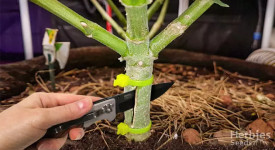
Thank you for leaving a comment for us!
Your feedback will be posted shortly after our moderator checks it.
Please note that we don’t publish reviews that: